Development of plant-derived epoxy resin for molded devices for electric power
- Mika Otake
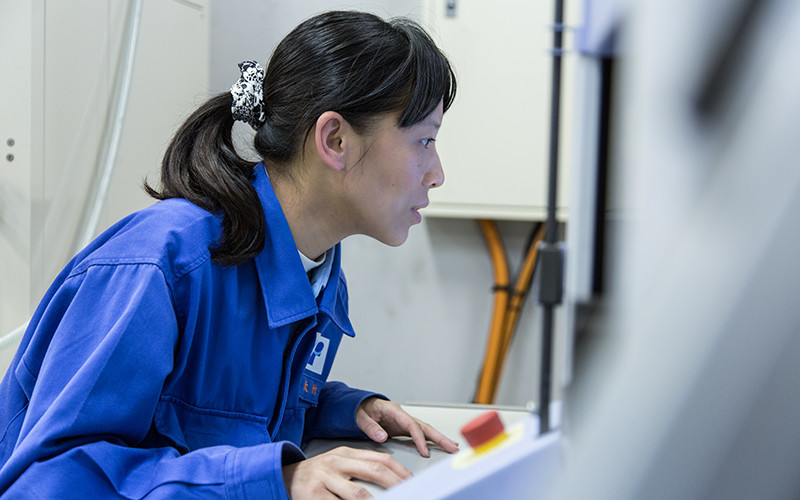
Toward the realization of a low-carbon society, the development of technologies that reduce CO2 emissions and oil resource use has been actively sought in a variety of fields. In the electric power field, reductions in the use of SF6 gas used as an insulation medium in many electric devices are necessary because of the greenhouse effect.
TAKAOKA TOKO has been working to enhance the performance of the epoxy resin used as insulation for molded devices for electric power equipment. In order to achieve further greening of molded devices for electric power equipment, we have promoted the development of resin in recent years that contributes to a reduction in the environmental load. Among our current research projects, we would like to introduce our effort for the development of plant-derived epoxy resin for molded devices for electric power equipment.
Technology
Reducing environmental load through the development of biomass resource-based resin
An epoxy resin for electric power equipment consists mainly of three materials: the base resin, hardener, and filler. One of the effective ways to realize a reduction in CO2 emissions is to replace the petroleum-derived materials of the base resin and hardener with biomass resources.*
In past research, we developed a resin by using epoxidized linseed oil, which is a biomass resource based on the linseed oil for salad dressing, as a base resin and developed its usefulness. In this research, we focused on novolac-type phenolic resin as the main hardener in the semiconductor packaging field. We confirmed that applying this resin as a hardener shortened the curing time, which had been a problem, to a level equivalent to that of conventional epoxy resin for electric power devices, while maintaining the same performance as conventional plant-derived epoxy resin. Currently, we are involved in further research to promote the development and practical realization of resin that reduces the environmental load.
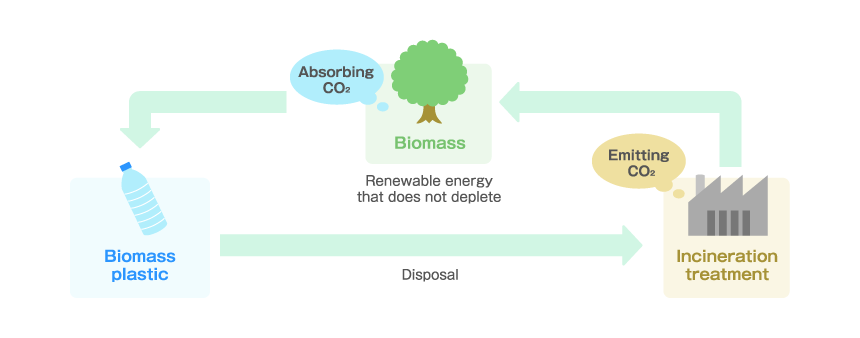
Biomass resources can be produced repeatedly without emitting CO2 in its lifecycle. In addition, they are also characterized by non-limiting production areas.
Profile
-
 Mika OtakeResearch & Development Center of Technology Development Division
Mika OtakeResearch & Development Center of Technology Development Division
Material Technology Group
Approaching from upstream the resin development stage to reduce the environmental load
The main objective of our research is to develop an environmentally friendly epoxy resin for molded devices for electric power equipment. A wide variety of approaches can be used to reduce the environmental load. Since I joined this company in 2006, I have worked on the research and development of resins to reduce CO2 emissions during the molding of products and to effectively use waste products in consideration of the product lifecycle. In this research, I worked on the development of an epoxy resin using biomass resources that do not generate CO2 in the lifecycle.
The epoxy resin that we developed is used as a solid insulating material for molded devices for electric power equipment. The products used in the electric power field need to have high insulation performance and safety for long periods of time in order to supply stable electric power. Therefore, from the customer's point of view, the products must be safe to use for long periods and must be low in cost. On the other hand, from the manufacturer's point of view, ease of use when molding products is required. Therefore, we have evaluated and verified the various characteristics of insulation performance and mechanical strength, thermal shock resistance, and molding processability.


An epoxy resin for electric power devices consists of three materials: the resins as the base resin and hardener and a material such as quartz as the filler to reduce the expansion and shrinkage of material from temperature variations. The main purpose of this research is to study the optimum material formulations and molding processes. Since many materials are not commercially available, we must select and obtain materials after referring to the literature and research in fields than other electric power field. We always start by groping in the darkness.
To this epoxy resin, we applied linseed oil as a base resin, a novolac-type phenolic resin that is mainly used in the semiconductor packaging field as a hardener, and spherical fused quartz as a filler. As a result, we successfully shortened the curing time, which had been a problem, to approximately 50%, while maintaining equivalent performance to that of conventional plant-derived epoxy resin. This achieved both molding processability and thermal shock resistance, which were opposing characteristics, and enhanced the applicability of plant-derived epoxy resin to molded devices for electric power equipment.

Every time we overcome a hurdle, we come closer to a clean energy society
Currently, we are verifying issues and solutions using actual equipment based on research results. We must overcome many hurdles for practical realization. I have been engaged in the research and development of resin like this for over 10 years, and I think it is very profound because when I achieve new research results, the next point to improve becomes obvious. After much trial and error, the resins we develop are commercialized for the market−it's probably a little like the feeling one gets as a child grows up and leaves the nest. I have an attachment because I worked on them for many years.
Undertaking research projects from the upstream resin development stage to create high-quality products is the advantage we provide. From now on, I would like to realize environmentally friendly and safe manufacturing and the next-generation clean-energy society from the perspective of material development.

Latest articles
-
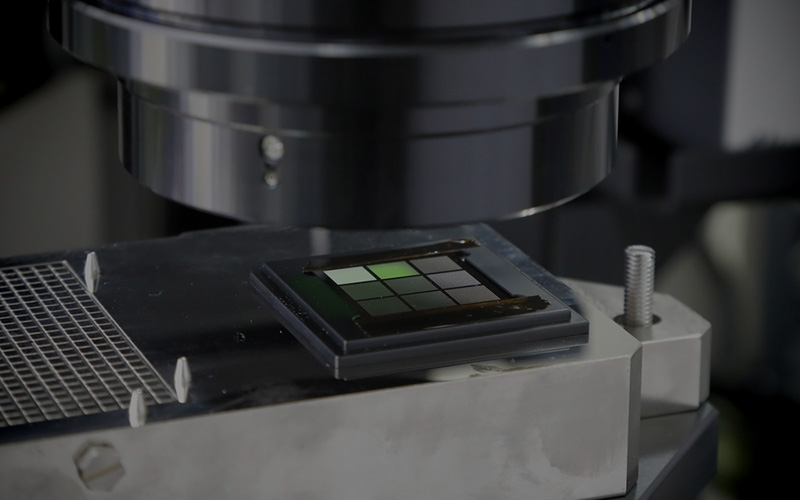 interviewThe confocal surface shape measurement system for semiconductor reliabilityIt is no exaggeration to say that semiconductors are used in everything supporting our lives and industry in modern society. Examples include smartphones, home appliances, and industrial products in various fields.
interviewThe confocal surface shape measurement system for semiconductor reliabilityIt is no exaggeration to say that semiconductors are used in everything supporting our lives and industry in modern society. Examples include smartphones, home appliances, and industrial products in various fields. -
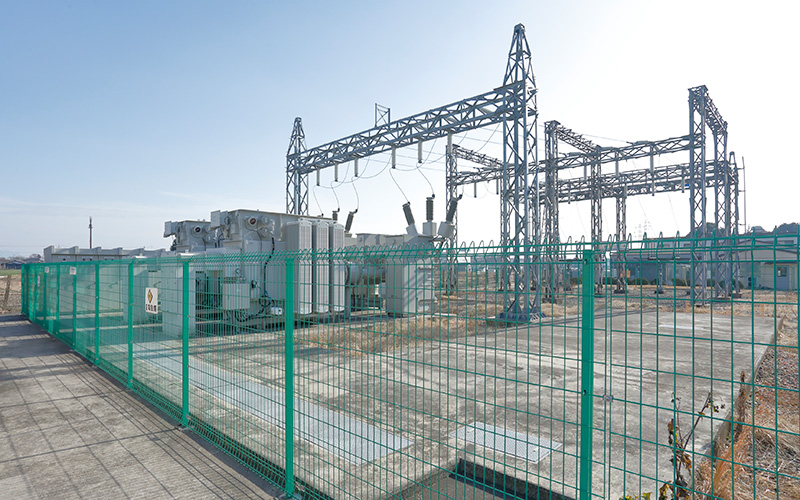 interviewImplementation of a Sensor Solution for Substation DigitalizationGlobal energy prices remain at high levels. The presumed cause is the imbalance between energy supply and demand due to recovery in economic activity from the spread of COVID-19, unseasonable weather, disasters, Russia's invasion of Ukraine, and other factors. The soaring energy prices naturally have an impact on the electricity sector, putting not only ordinary households but also electricity suppliers, or electric power companies, in a difficult situation. Power companies are being forced to cut costs to keep power prices down.
interviewImplementation of a Sensor Solution for Substation DigitalizationGlobal energy prices remain at high levels. The presumed cause is the imbalance between energy supply and demand due to recovery in economic activity from the spread of COVID-19, unseasonable weather, disasters, Russia's invasion of Ukraine, and other factors. The soaring energy prices naturally have an impact on the electricity sector, putting not only ordinary households but also electricity suppliers, or electric power companies, in a difficult situation. Power companies are being forced to cut costs to keep power prices down. -
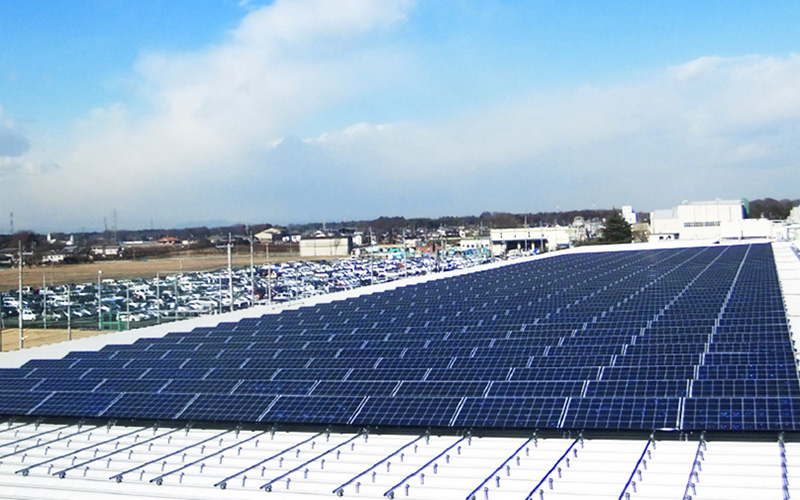 interviewDevelopment of Techniques for Solar Power Generation Prediction Using AIIn order to promote carbon neutrality, the use of renewable energy that doesn't emit CO2 is expanding.Among renewable energy resources, solar power generation is an important one which will continue to grow in popularity.
interviewDevelopment of Techniques for Solar Power Generation Prediction Using AIIn order to promote carbon neutrality, the use of renewable energy that doesn't emit CO2 is expanding.Among renewable energy resources, solar power generation is an important one which will continue to grow in popularity. -
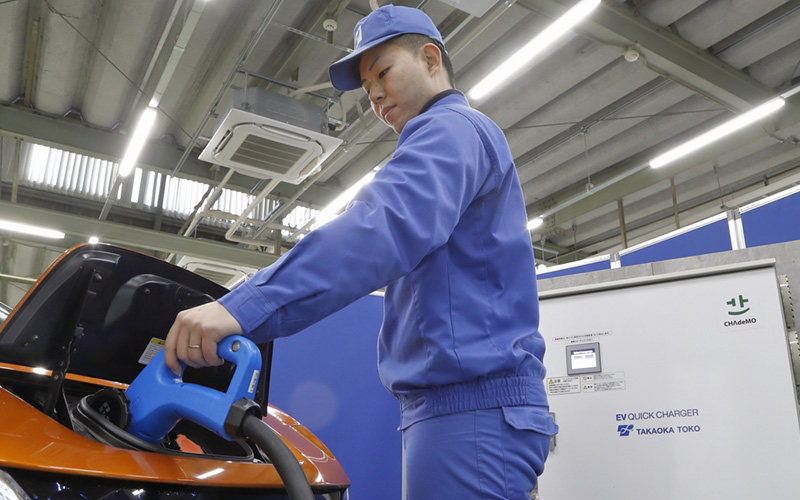 interviewDevelopment of Medium-Capacity Quick Charger for Electric VehiclesIn anticipation of expansion of EV charging infrastructure in Japan, where the EV shift is accelerating, we worked on the development of the “medium-capacity quick charger (B11)” as a charger that meets the needs for intermediate chargers between normal chargers and quick chargers. This article introduces the features of the product, ingenuity in the development process, and our future vision.
interviewDevelopment of Medium-Capacity Quick Charger for Electric VehiclesIn anticipation of expansion of EV charging infrastructure in Japan, where the EV shift is accelerating, we worked on the development of the “medium-capacity quick charger (B11)” as a charger that meets the needs for intermediate chargers between normal chargers and quick chargers. This article introduces the features of the product, ingenuity in the development process, and our future vision.
